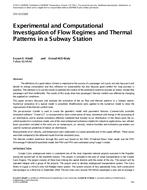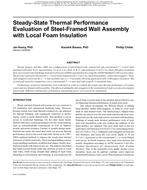Demands to control climate change are forcing HVAC equipment designers to consider new lower GWP refrigerants to replace traditional higher global warming potential (GWP) refrigerants, for example R134a and R410A. Understanding the environmental tradeoffs of using these new low GWP alternatives in HVAC products is becoming well understood, but what uncertainty remains in understanding how they impact the on building sustainability. The direct GWP environmental benefits of using new lower GWP alternatives is easy to characterize since it is just matter accounting for the change in direct GWP of the refrigerants and any change in refrigerant leak rates between various products. The indirect GWP environmental benefits related to the energy efficiency of products are more difficult to understand.
Some alternatives have lower thermodynamic COP or the alterative may have different efficiency versus ambient performance characteristics than the refrigerant they replace. In addition, performance of the HVAC system selection interactions with building type and climate zone add to the uncertainty. By using ARM and AEDM certified system modeling tool to represent the physical HVAC system, generate equipment performance curve, and then apply to commercial building simulation tool which take lot of information into analysis, such as yearly weather information, detail building information and control information. The conjunction system can use valid system performance models and analysis method to analysis impactions of newly developed refrigerants in the system. This paper will provide an understanding of the impacts on total building sustainability through using building model simulations employing products using new lower GWP alternatives R513A and R452B to replace R134a and R410A.
Citation: 2017 Annual Conference, Long Beach, CA, Conference Papers
Product Details
- Published:
- 2017
- Number of Pages:
- 8
- Units of Measure:
- Dual
- File Size:
- 1 file , 1.2 MB
- Product Code(s):
- D-LB-17-C047


